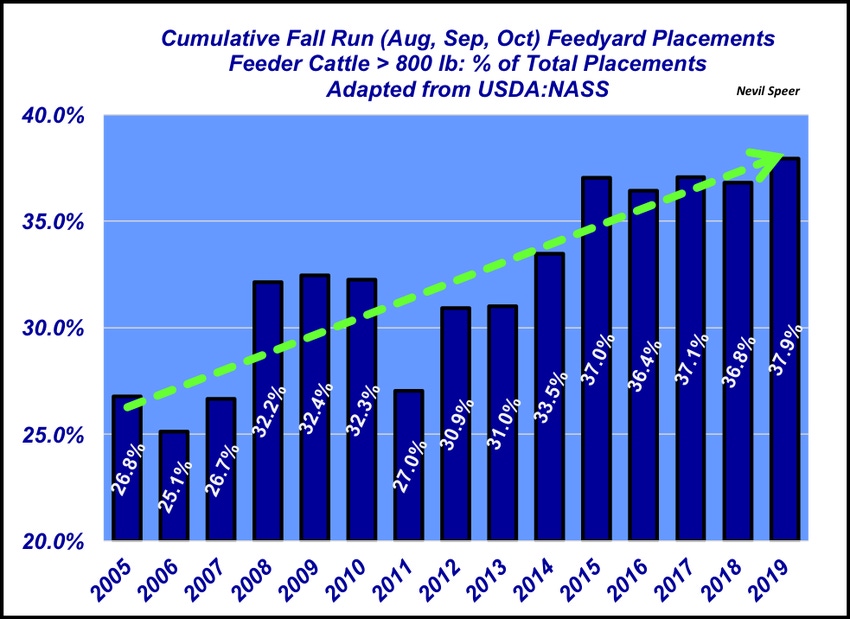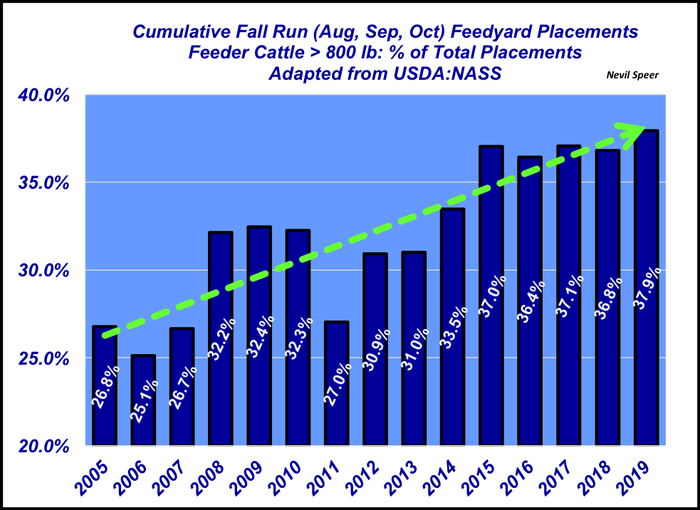Fall run placements getting heavier
Feedyards have made their preference clear—background the lighter end of the calf crop.
December 5, 2019

Over the years, this column has provided some focus on shifting placement patterns among U.S. feedyards. Most significant within that emphasis being that cattle on the upper end of the placement weight range (greater than 800 pounds) have been and are accounting for a greater percentage of total placements.
That trend is highlighted in this week’s illustration. The graph details the trend of heavy placements over time. It represents the portion of 800+ plus-pound placements during the fall run—August, September and October—since 2005. Those placements have largely come at the expense of light-weight (less than 600-pound) placements over time.
Nevertheless, the trend highlights the priorities within the feeding sector. Increasingly, the sector is not just settling for just any kind of cattle, even when calves can be purchased at a discount during the fall run. Rather, cattle feeders are becoming increasingly synchronized in terms of their respective supply management. That means they’re ultimately placing a greater portion of heavier cattle into the feedyard.

Why is that? Bigger cattle enable better positioning around both health and risk management upon arrival. They’re more predictable in terms of performance and increased portion of such replacements helps to simplify management of the feedyard.
The trend means cattle on the lighter end of the available feeder supply are increasingly moving into backgrounding and/or grazing programs. That enables the calves to get started and straightened out before heading to the feedyard. And then, we ultimately see them on the other side when they show up as the heavier end of feedlot placements. This trend has been well in place during the past 15 years – and not likely to slow down in the years to come.
Speer serves as an industry consultant and is based in Bowling Green, Ky. Contact him at [email protected]
About the Author(s)
You May Also Like




.png?width=300&auto=webp&quality=80&disable=upscale)
